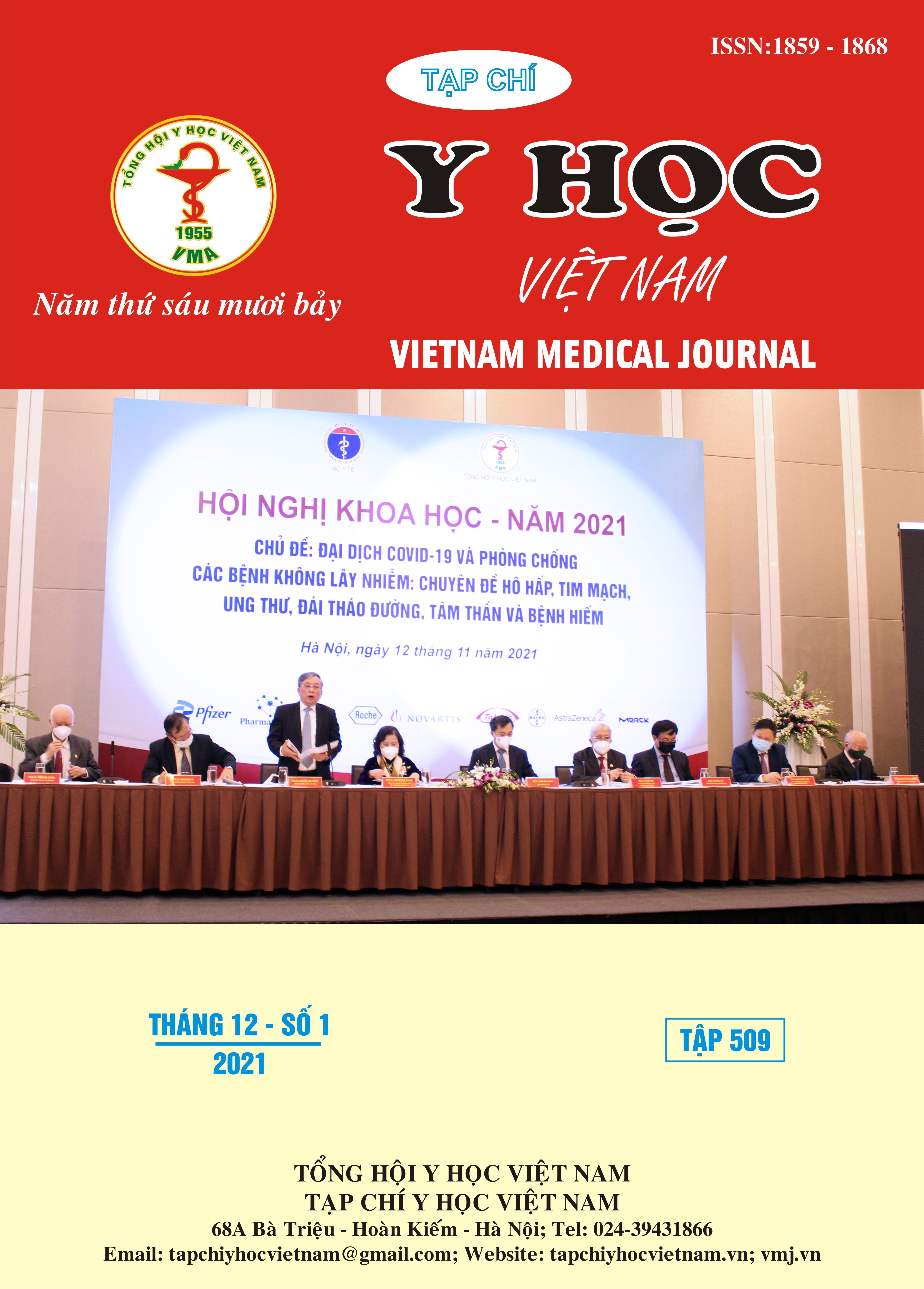ĐÁNH GIÁ TÁC DỤNG CỦA LUMBROKINASE TÁI TỔ HỢP TRÊN CHUỘT NHẮT GÂY NHỒI MÁU NÃO TRONG GIAI ĐOẠN CẤP
Nội dung chính của bài viết
Tóm tắt
Mục tiêu: Triển khai mô hình nhồi máu não trên chuột nhắt trắng, đánh giá tác dụng của lumbrokinase tái tổ hợp trong việc hồi phục chức năng vận động của chuột nhắt trắng trong giai đoạn cấp. Phương pháp: Mô hình gây nhồi máu não tại động mạch não giữa của chuột nhắt trắng theo phương pháp của Cyrille Orset và cộng sự (2007), các phương pháp đánh giá tác dụng của thuốc trên mức độ tổn thương chức năng vận động của chuột trong giai đoạn cấp. Kết quả và kết luận: Mô hình gây nhồi máu não trên chuột nhắt trắng được sử dụng trong nghiên cứu này cho phép tạo ra một cục máu đông có bản chất sát với thực tế lâm sàng; chế phẩm lumbrokinase tái tổ hợp mức liều 200mg/kg có tác dụng hồi phục chức năng vận động của chuột trong điều trị nhồi máu não trên mô hình thực nghiệm trong giai đoạn cấp.
Chi tiết bài viết
Từ khóa
lumbrokinase, mô hình gây nhồi máu não, chuột nhắt
Tài liệu tham khảo
2. Rosamond W, Flegal K, Furie K, et al. Heart disease and stroke statistics—2008 update: a report from the American heart association statistics committee and stroke statistics subcommittee. Circulation. 2008;117(4):e25–e46
3. Kotb, E. (2014), “The biotechnological potential of fibrinolytic enzymes in the dissolution of endogenous blood thrombin”, Biotechnology progress.
4. Cyrille Orset et al (2007), Mouse Model of In Situ Thromboembolic Stroke and Reperfusion, Stroke.38:2771-2778.
5. Clark W, Gunion-Rinker L, Lessov N, Hazel K, Macdonald RL. Citicoline treatment for experimental intracerebral hemorrhage in mice. Stroke. 1998, 29, pp. 2136-2140.


